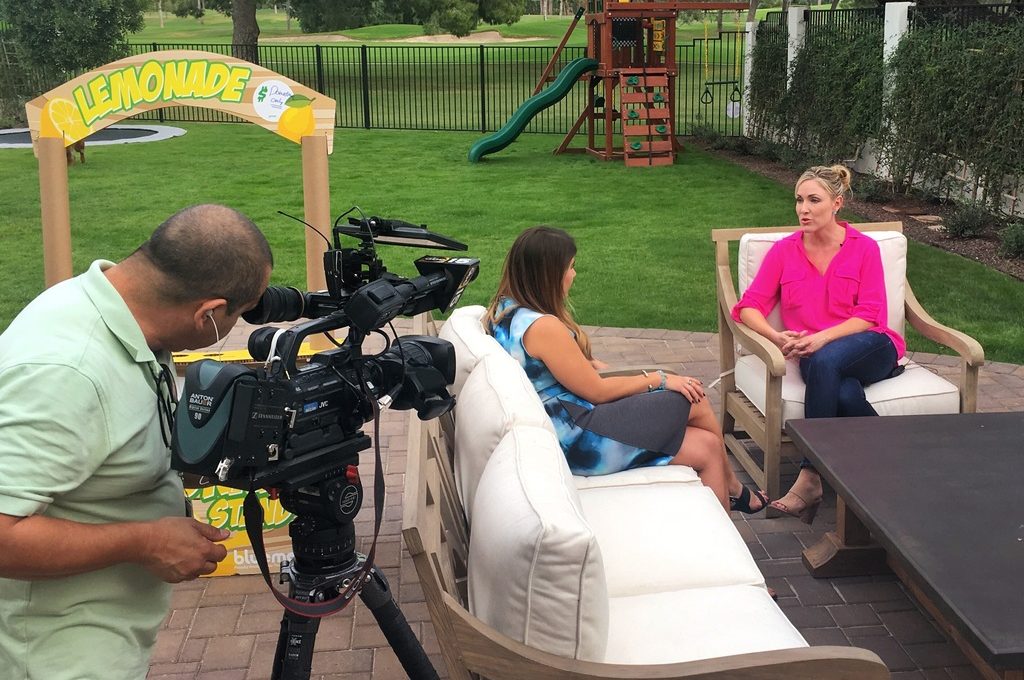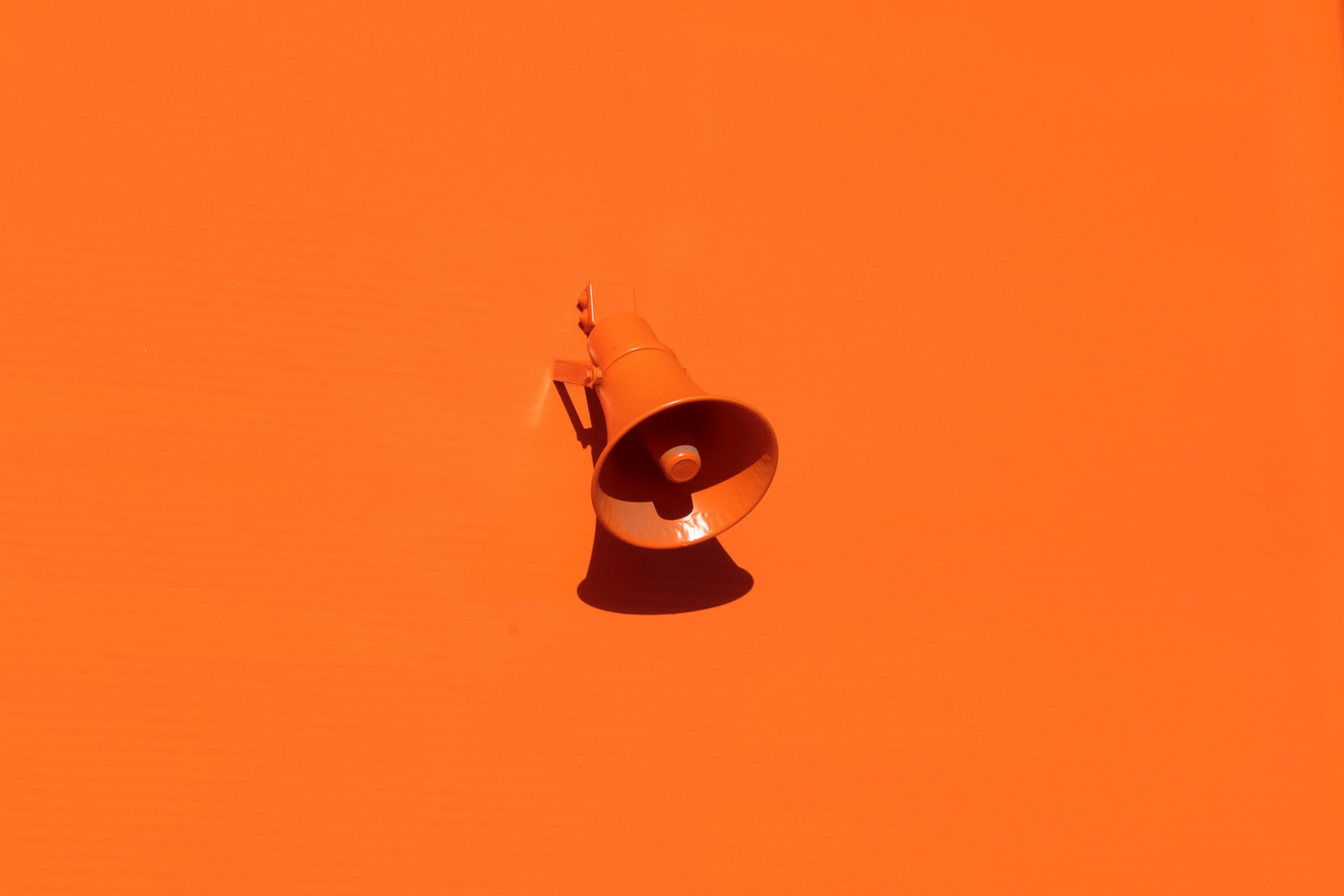The studio’s a little smaller than you imagined, and the lights are much brighter. A nice person with a headset stuffs a battery pack down your shirt and clips the microphone to your collar as you’re directed to sit on a couch. Except, you were expecting a desk chair.
How does a person look good sitting on a couch? Normally, you would sink into the cushions, making yourself comfortable. You do want to appear comfortable, right? Or would you look unpoised and slouched? The anchor asks if you’re ready. What? Already? What were you supposed to say again? Where should you look? Straight into the camera, right? What do you do with your hands?
But it’s too late.
“Ready in five, four, three . . .”
Going on TV can be nerve racking. Something about the bright lights and all the eyes and camera lenses on you sparks a kind of anxiety you didn’t think was possible. But you’ve seen people nail their news interview. What do they know that you don’t? I’ll let you in on a little secret: behind every great interview is a PR person and a professional media training session.
Lucky for you, I’m going to share our agency’s pro media training tips to a killer on-camera interview.
Ain’t No Party Like a Preparation Party
Preparation is paramount when it comes to appearing on TV. You should first determine your goal of the interview: What do you want your audience to know by the end?
Write down the five main ideas you want to get across to the news anchor and the viewers. These will be your talking points. While these will be different on a case by case basis, you should include who you are and why your company matters to the audience.
Then, refine your talking points into a sentence or two each that you will have no trouble remembering when it comes time for your interview. These will become your sound bites, or the nuggets of information that the station can replay, that paint a general picture of what you’re talking about. Television news is run on a very carefully managed schedule. Sound bites help producers piece together your story efficiently. And if there’s anything you should take away from this, it’s that you always want to make the producer happy.
Getting the right information across to the audience is the key to nailing an interview. Accomplishing your goal will depend on how efficiently you can communicate your ideas within the length of the segment (which can range from one to 10 minutes), and ultimately on your preparedness.
Audit Your Closet
Be ready to dress the part for your interview. Pastel-colored clothing translate well on camera, especially light blues. Do not wear white, black or any patterns – only solids. Unless the interview is more serious, we encourage you to wear your own branded clothing. Otherwise, stick with professional attire.
Day of Interview: Calm Those Qualms
Calming your nerves before an interview is incredibly important. The last thing you want is to forget the talking points you carefully prepared, or worse, completely freeze mid-segment.
Here are a few exercises you can run through right before your big debut:
Breathe it in
It’s amazing what deep breathing can do for you. If you’re feeling those pre-TV jitters, take in a big breath of air, all the way down to your belly, and let it out with a sigh. Repeat a few times.
Slow, deep breathing will ease your heartrate, calm the anxiety-driven voice in your head and refocus your thoughts back to those talking points we discussed earlier.
Shake it Out
Now that your mind has slowed, it’s time to release the nervous energy that trapped itself in the rest of your body. Get on your feet, shake your limbs, go for a short walk – anything to get your body moving.
Laugh it Up
Nothing gets rid of pre-TV anxiety quite like laughter. I recently tested this theory with our client Colleen’s Dream Foundation and 9-year-old Chloe Cundiff. Chloe raised nearly $10,000 for the ovarian cancer foundation by selling lemonade over the summer. Cool story, right? Local TV thought so, too. And soon enough, Chloe had several interviews scheduled.
To help calm her nerves, I came up with a breathing technique called the Lion Roar. I told her to take a deep breath in and then let it out in her best impression of a lion’s roar. Not only did it incorporate our first nerve-calming technique, the roar would make Chloe giggly and ready for the interview.
Find something that will bring a smile to your face before your interview. Whether it’s your favorite compilation of “The Office” bloopers, or you make a friend at the station to crack jokes with, laughter really is the best medicine.
Lights, Camera . . .
You’ve reviewed your talking points, have the perfect outfit on and eased your nerves. You’ve been invited to the onset couch and they’re about to go live. Let’s go over how you should carry yourself throughout the interview.
First, sit up straight. However that needs to happen (like sitting at the edge of the couch), ensure your posture is correct and hold your head high. This will not only make you look professional and confident, it will make you feel that way too
For most interviews, especially live ones, you don’t want to look directly into the camera. In your mind, think about the message you want to convey to the viewers. On the outside, however, you’re there to have a conversation with the anchor. So, look him or her in the eye.
Sitting on a couch or at a desk, fold your hands either on your lap or on the desk top. If you’re standing during an interview, keep your hands at your side. Never cross your arms, hold them behind your back or play with your face or hair – nothing says, “I’m nervous,” quite like these interview faux pas.
Lastly, be friendly, courteous and smile often. Just like the old adage that the camera adds 10 pounds, the camera also adds rigidity. Being animated can go a long way.
You’re a Star, Kid
Follow our media training advice, and going on TV will seem easy. Need more specialized advice? Comment with your questions below!




